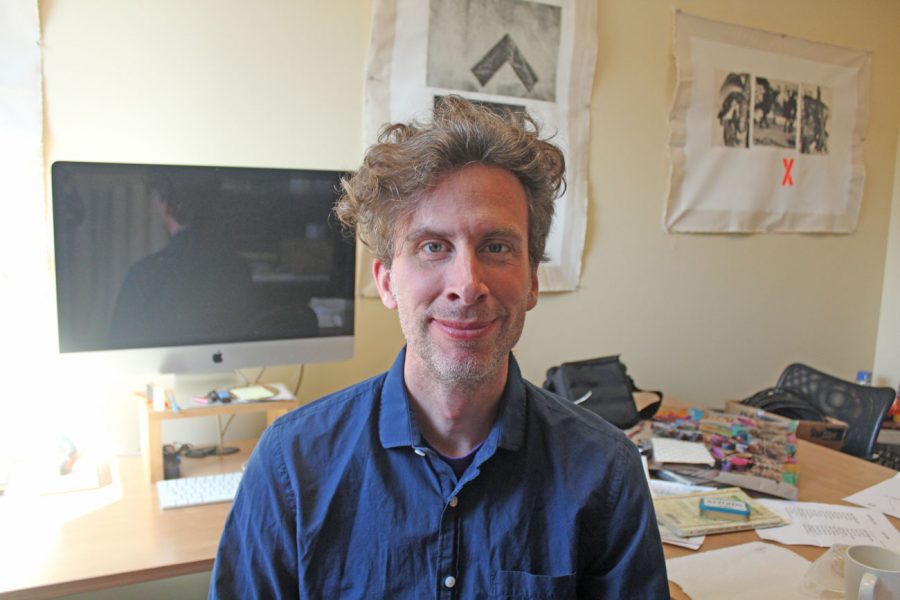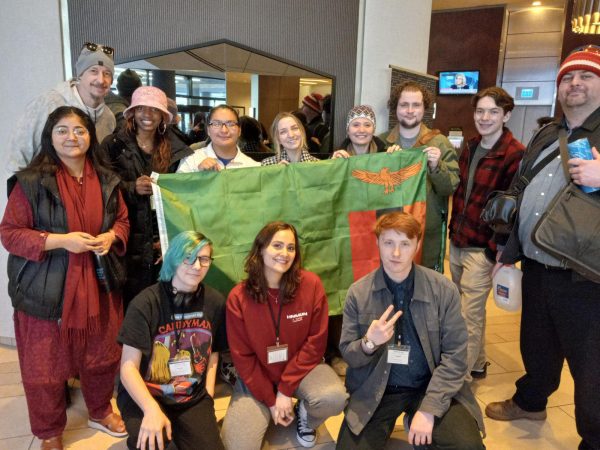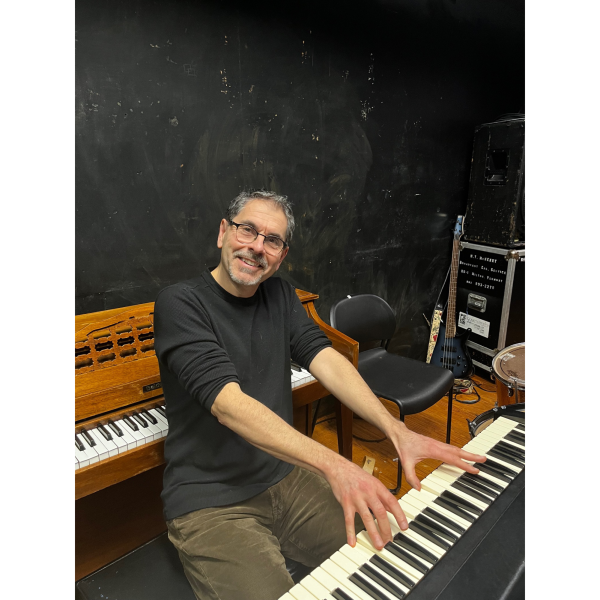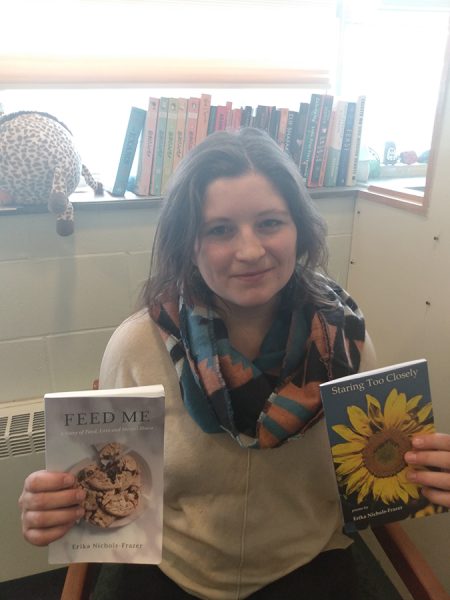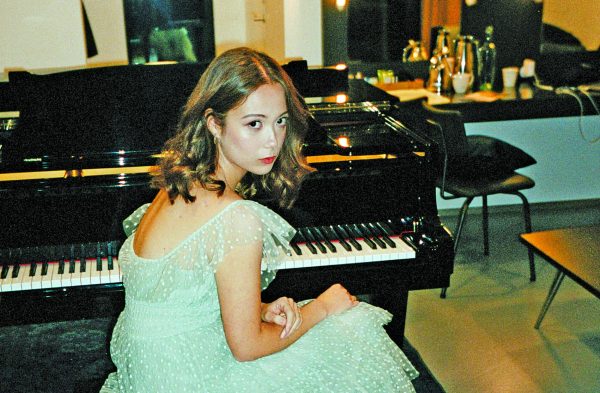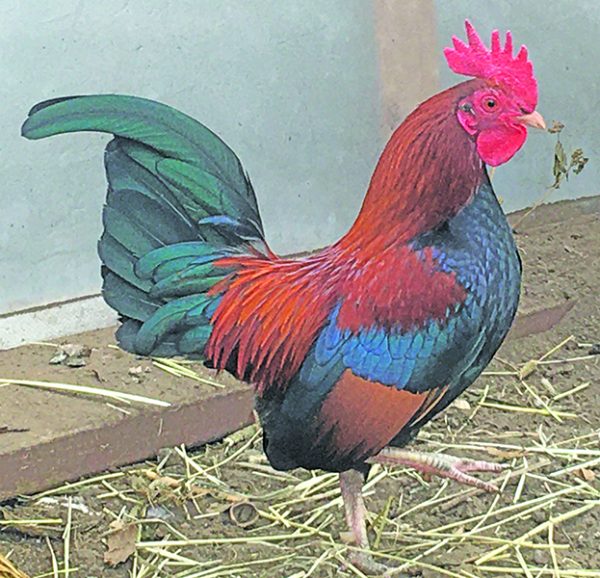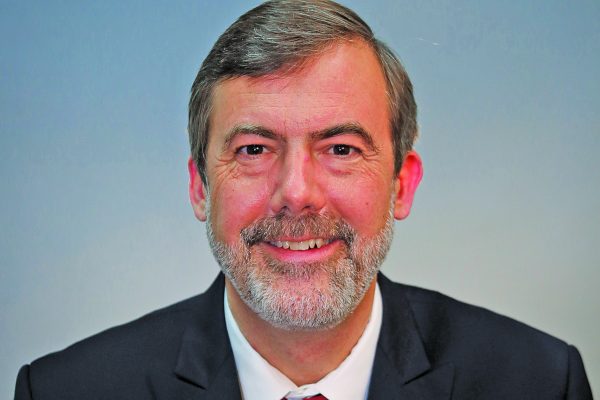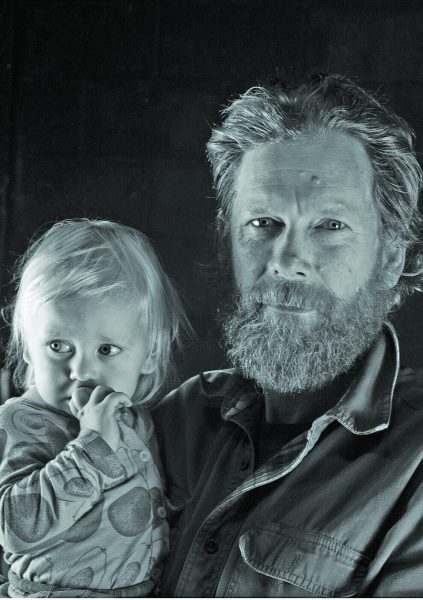Kind of an adult
Sean Clute
Sean Clute, an assistant professor of digital art at Johnson State College, is a multimedia artist, composer and performer focused on blending digital audio and visuals for live performances. His art has been presented internationally at a variety of venues including The Kitchen, San Francisco Museum of Modern Art, MuseumsQuartier Wien, ISEA2014 – Dubai and the Autonomous Mutant Festival. At his sun-filled office in the Visual Art Center, Basement Medicine sat down with Clute to discuss his ever-changing artistic title, his Austrian heritage, his passion for Japanese soup making and why one of his most recent art pieces in Hong Kong was removed by the Chinese government.
Tell me briefly about yourself.
I was born Nov. 28, 1975, a long time ago. I’m 40, so now I’m like, an adult… Kind of. I was born in Washington, D.C., and then my family moved up to Plattsburg, N.Y. I lived most of my life there and then got the hell out of Plattsburg because I hated the cold, and then I moved to New Mexico. I lived there for a while and then eventually moved out to California, and then moved to Vermont. So I kind traveled throughout different parts of the country, and I like traveling. During all these travels, I became obsessed with and started studying music and composing. I went to this very experimental place called Mills College in California, and while I was there during graduate school, I realized that music and visual art had so much in common when considering the type of technology used for both. So I started exploring how technology can be creative and express things in new ways that haven’t been done before. And that’s what I do here. I teach all of the media arts stuff and try to get students to become aware and use the technology as a tool for expression.
What brought you to JSC?
Oh, well, there’s the long story and there’s the, sort of, abridged story. The problem is I can tell stories forever. But the short story is that I was living in California while my parents lived in Plattsburg. So I would fly back home at Christmas to visit them. I flew back one winter and I saw a poster at the Burlington airport for Johnson State College and it was near the baggage claim area, and I thought, wow, that’s beautiful. About a week or two later I saw that there was a job opening at JSC, and the job description had nothing to do with what I know or teach here, but I said, “Screw it,” and I applied and got the job somehow. So it was a lot of different forces and many years of serendipity that brought me here, I think.
What kind of classesdo you teach at JSC?
Every semester I teach Intro to Digital Media, which is an overview of media. This semester I am teaching an animation class as well as a new media class where we are building things with electronics, such as hardware. In the past I have taught digital video and I teach a freshman seminar called iMe. The beauty of teaching digital media is that no one really knows precisely what it is, so you can make it what you want it to be. I love that about teaching at JSC.
What kind of art do you do/what projects have you been involved in?
I work a lot with digital technology and performance. So I find ways to perform live with video and sound in front of an audience. That’s kind of my smaller field of digital media. I think that’s partly the case because of my background in music and performance. I’ve carried that kind of love of performance into the technology. So I do that alone as a solo artist, but also do that in collaboration with dance artists. In particular, there is a group called “Double Vision” that I work with.
What did you want to be when you grew up?
As far as I can remember, I was always interested in art and I think I wanted to be an artist, or someone creative like that. When I was growing up in D.C., my dad would take me to the Smithsonian Gallery and, in particular, I remember the East Wing Gallery. When you would go into the East Wing, you would see this huge Alexander Calder mobile hanging from the ceiling. I remember thinking as a kid that that was the coolest thing ever. I thought it was some kind of dinosaur, but I also realized that it might not be. I thought that people making that were the coolest thing. And then later, in highschool, my parents took me to an exhibition in Montreal featuring Andy Warhol popart. I remember coming back to highschool and being asked to tell the class about my trip, and my teacher said, “That’s ridiculous, that’s not art.” And I thought to myself, that’s an interesting thing to say and I would love to be the person to make people say that. Later on in high school I remember my chemistry teacher saying similarly, “That’s ridiculous, you can’t be an artist.” This really motivated me and made me question why that’s not possible. All these things like that kept coming in and I love challenging that expectation of what is possible. And that’s very true in my work; I love to challenge the technology to figure out what I can do with it, how can I change it, how can I modify it.
What inspires you?
Openness, newness, and people or groups of people that either create or make an environment that allows for complete experimentation with no judgment.
If you were a Crayon color, what color would you be and why?
This is funny because when you ask that question, what immediately comes to mind is when I ask my daughter silly questions like, “What’s your favorite color?” Since she could talk she has always had the same answer: “Dad, I like all of them.” So I guess I’m gonna take her answer and say I would be all of them.
What title would you give yourself as an artist?
How I’ve described myself over the past five or 10 years has always changed, because people always go, “Oh, well, what’s that mean?” because it’s really hard to define it. So for a number of years I was an inter-media artist. To me, that meant an artist who worked with a lot of electronic art. But that was confusing. That term was used a lot in the late 90s and early 2000s, with that terminology eventually changing to the term interdisciplinary artist so I used that title for a while. Now I call myself an interdisciplinary media artist and that’s just because I need a tagline on the Internet, but I expect that will change as the art form changes.
What international art projects have you been in?
I have a number of international projects, but my most recent one, called “Dancing Ellipse,” is on display in Hong Kong for a project called “Open Sky Project.” I got to program 100 LED lights that are on the largest building in Hong Kong. I was selected along with a number of other artists to light of this building that is right in the harbor of the city. This piece was up for a while, but unfortunately the Chinese government recently took it down because one of the other artist’s art pieces that was being shown on the building was deemed too controversial. The curator did not know this would be an issue, and now the Chinese government is very angry and it became this very political thing. So my piece is no longer up. However, things are trying to be worked out with the Chinese government and hopefully it will be lit up again soon.
What are some of your other hobbies?
I’m into making Japanese soups from the Meiji period. This particular soup, Atsuage To Satsumaimo No Misoshiru, is one I’ve been trying to perfect. I’ve never had it professionally made so I’m not sure what it actually is supposed to taste like. But the process is long, it takes me about six hours to make it and I have to use a variety of seaweeds that I have to get shipped here. So I don’t do it very often, but it’s something I’ve been doing for about 15 years, so I hope it’s improving.
Is there one art project you’ve always wanted to do?
Yes. I want to call it “Großvater,” which is German for grandfather. I want to do a piece about my grandfather’s life in Nazi-occupied Austria. When he passed away, we found all of these interesting photographs and documents from a life that I didn’t really knew he had when he came to America as a refugee, and I wanted to animate aspects of his life using these documents as source material. This is very much a personal project I would love to do, so I haven’t really found the space to do it because a lot of my work has been consumed by work such as commissions, instead of things that I would just do for myself. So I could give up making the Japanese soup to make time to maybe start on this project.
If your house were burning down and your could only save one of your possessions, what would it be?
God, I hate to say it, because it sounds like such a terrible answer. But if my house were burning down and I could grab something… aww, this just sounds terrible, but I’d probably grab my computer. My artwork is in it, and I have shows coming up, and the thought of having to rebuild it would be too much.
What upcoming projects do you have?
I have a large upcoming exhibit at the Burlington City Arts gallery from Oct. 7 at 5 p.m. through January. It’s for this project called “Of Land and Local” that’s happening throughout the state, and it has to do with Lake Champlain and raising awareness about local environmental issues. At this exhibition, I’m collaborating with a man named Al Larson whose is a professor at Champlain College who teaches the same kind of classes I teach here. We were given a warehouse to work in and we’ve worked all summer together planning this thing.
What is your advice for aspiring artists?
Find out what your heart is singing and stay true to it.


